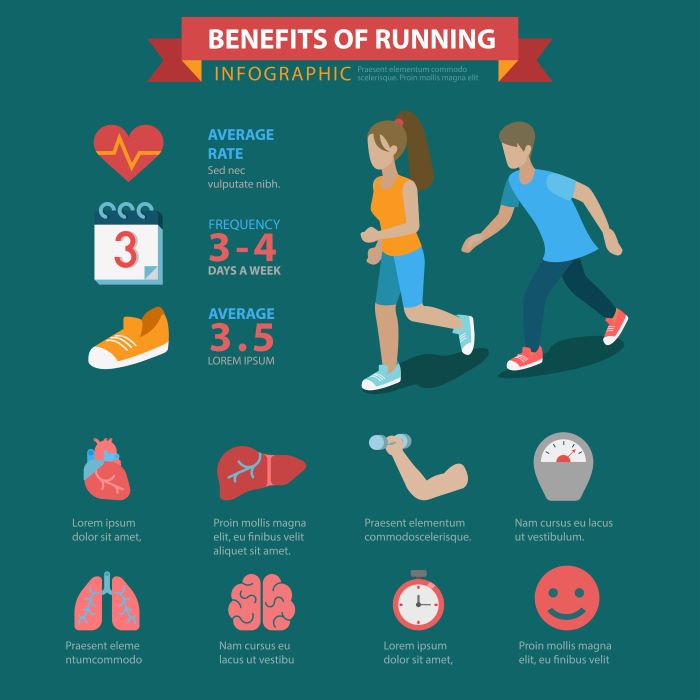Preparing for a half marathon is an exhilarating journey that requires a solid understanding of essential training components. To optimize your performance, you need to focus on several key areas that will ensure you are well-prepared for race day.
Firstly, building a strong base is crucial. This involves gradually increasing your mileage over time while incorporating rest days to allow your body to recover. Most training plans suggest a minimum of 10 weeks, with long runs scheduled each week to boost stamina.
Secondly, consider adding speed work to your regimen. Interval training and tempo runs help improve your running economy and speed, which are vital for achieving your personal best. Incorporate these sessions once a week to ensure a balanced approach to your training.
Another important aspect is cross-training. Engaging in activities such as cycling, swimming, or strength training can enhance your overall fitness and reduce the risk of injury. Aim for one or two cross-training sessions weekly to complement your running workouts.
Lastly, nutrition and hydration cannot be overlooked. Fueling your body with the right nutrients and staying hydrated will support your training efforts and recovery. Focus on a balanced diet rich in carbohydrates, proteins, and healthy fats.
With these essentials in mind, you’ll be well on your way to conquering your half marathon goal. Visit our website to learn more and get started today! Click here.
Key Workouts to Build Endurance and Strength

To successfully tackle a half marathon, incorporating key workouts that focus on both endurance and strength is essential. These workouts not only prepare your body for the distance but also enhance your overall performance on race day.
One of the most effective workouts for building endurance is the long run. This weekly staple should gradually increase in distance, reaching up to 10-12 miles as you approach race day. Long runs help your body adapt to prolonged exertion, improve cardiovascular fitness, and build mental toughness.
In addition to long runs, tempo runs are excellent for developing speed and stamina. During a tempo run, you should aim to run at a comfortably hard pace for a sustained period, typically 20-40 minutes. This type of workout trains your body to maintain a faster pace over longer distances, enhancing your lactate threshold.
For strength building, incorporate hill workouts. Running uphill not only challenges your muscles but also improves your running form and efficiency. Aim for a session that includes a warm-up, several repeats of hill sprints, and a cool-down. This workout builds leg strength and power, which are crucial for completing a half marathon.
Lastly, don’t forget about cross-training workouts that focus on strength training. Incorporating exercises such as squats, lunges, and core workouts will enhance muscle strength, stability, and injury prevention, allowing you to perform at your best during runs.
Incorporating Speed Work for Race Day Success

Integrating speed work into your training regimen is crucial for optimizing your performance in a half marathon. Speed workouts not only improve your pace but also enhance your overall running efficiency, making them a vital component of a well-rounded training plan.
One popular method for incorporating speed work is through interval training. This involves alternating between high-intensity bursts of speed and recovery periods. For instance, you might sprint for 400 meters, followed by a 400-meter jog or walk. Repeat this cycle several times, gradually increasing the number of intervals as your fitness level improves. Interval training effectively boosts your cardiovascular capacity and helps you develop a faster race pace.
Another effective strategy is fartlek training, a Swedish term meaning ‘speed play.’ This workout encourages a mix of fast and slow running within a single session. You can incorporate fartlek workouts into your regular runs by including short bursts of speed for a set distance or time, followed by periods of easy running. This variability not only keeps your workouts interesting but also prepares your body to handle changes in pace during a race.
Additionally, consider adding strides at the end of your easy runs. Strides are short bursts of speed, typically 20-30 seconds long, allowing you to focus on form and speed without overexerting yourself. These can be performed anywhere from 4 to 8 times after your run, helping to build speed and improve your running mechanics.
By strategically incorporating these speed workouts into your training, you will develop the necessary tools to tackle race day with confidence and achieve your personal best.
Effective Cross-Training Techniques for Runners
Cross-training is an essential addition to any runner’s training program, providing a balanced approach to fitness while minimizing the risk of injury. By incorporating different types of workouts, runners can enhance their overall strength, flexibility, and endurance, all of which contribute to improved running performance.
One of the most effective cross-training techniques is cycling. Riding a bike, whether on a stationary bike or outdoors, offers an excellent cardiovascular workout that is low-impact and easy on the joints. Cycling helps to build leg strength and endurance without the pounding associated with running, making it a perfect complement to your training routine.
Swimming is another fantastic cross-training option. This full-body workout engages multiple muscle groups while providing a low-impact environment. Swimming helps improve lung capacity and overall cardiovascular fitness, which can translate to better performance on the run. Incorporating swimming once or twice a week can enhance your recovery while keeping your aerobic base strong.
Incorporating strength training is equally crucial for runners. Focus on core exercises, leg lifts, and upper body workouts to improve your overall strength and stability. A strong core enhances posture and running efficiency, while stronger legs can help you maintain speed and reduce fatigue. Aim for two strength training sessions per week, focusing on compound movements that engage multiple muscle groups.
Lastly, consider adding yoga or Pilates to your routine. These practices focus on flexibility, balance, and mental awareness, all of which can improve your running form and prevent injuries. Regular sessions can help release tight muscles, enhance recovery, and promote mental relaxation.
By integrating these cross-training techniques into your regimen, you will not only boost your running performance but also enjoy a more balanced and enjoyable fitness journey.
Creating a Customized Half Marathon Training Plan

Crafting a customized half marathon training plan is essential for achieving your running goals while considering your unique fitness level, schedule, and objectives. A tailored plan not only keeps you motivated but also ensures that you steadily progress towards race day without risking injury.
To begin, assess your current fitness level. Are you a beginner, intermediate, or advanced runner? This evaluation will guide you in determining the appropriate mileage and intensity for your training. For beginners, starting with a base mileage of 10-15 miles per week is recommended, while more experienced runners might aim for 25-30 miles or more.
Next, outline your training duration. A typical half marathon training plan spans 10 to 14 weeks, allowing sufficient time to build endurance and speed. Be sure to include a mix of long runs, tempo runs, and interval training to develop various aspects of your running.
Incorporate a weekly long run, gradually increasing the distance by 10% each week. This will build your stamina and prepare your body for the race distance. Additionally, include speed workouts, such as intervals or tempo runs, to improve your pace and running efficiency.
It’s crucial to schedule rest days and cross-training sessions to promote recovery and prevent burnout. Consider including activities like cycling, swimming, or strength training on your cross-training days. These workouts will help maintain your fitness while reducing the risk of overuse injuries.
Finally, as race day approaches, consider a tapering period during the final weeks of your training. This phase allows your body to recover and store energy, ensuring you are in peak condition when it’s time to race. Adjust your plan as necessary based on how your body responds to training, and remember to listen to your body to avoid injuries.
By following these guidelines, you can create a comprehensive and personalized half marathon training plan that aligns with your goals, helping you to cross the finish line with confidence and pride.
Tips for Staying Motivated During Training

Staying motivated throughout your half marathon training can be challenging, especially when faced with long runs and the demands of a busy schedule. However, implementing some effective strategies can keep your spirits high and your feet moving. Here are some tips to help you stay motivated during your training journey:
- Set Clear Goals: Establish specific, measurable, and attainable goals that go beyond just finishing the race. Whether it’s achieving a certain time or completing a specific number of training runs each week, having defined objectives can give you a sense of purpose.
- Track Your Progress: Keep a training log or use a running app to document your workouts. Tracking your progress can provide visual proof of your accomplishments and help you see how far you’ve come, which can be incredibly motivating.
- Find a Running Buddy: Training with a partner can make runs more enjoyable and provide accountability. A friend can encourage you on tough days and share in your successes, making the journey feel less solitary.
- Mix Up Your Routes: Running the same route can become monotonous, so explore new trails and paths to keep your runs fresh and exciting. Discovering new scenery can reignite your passion for running.
- Reward Yourself: Set up a reward system for achieving milestones in your training. Treat yourself to new gear, a massage, or a special meal when you reach a significant goal, as this can create positive reinforcement.
- Join a Running Community: Engage with a local running group or an online community, such as Run Just For Fun. Being part of a vibrant group can provide motivation, support, and camaraderie, making your training experience more enjoyable.
Lastly, remember that it’s okay to have off days. Embrace the journey, and focus on the joy of running rather than just the destination. Every step you take is a leap towards fitness freedom, and with the right mindset and strategies, you can maintain your motivation throughout your training.
For more tips and tailored workouts to enhance your half marathon journey, visit our website to learn more and get started today!


